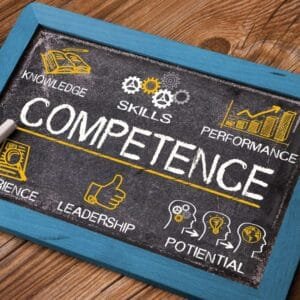Understanding Competency-Based Education (CBE)
Competency-Based Education (CBE) is a contemporary educational approach that focuses on mastering specific competencies rather than time spent in a classroom. This shift toward competency attainment marks a departure from traditional education models and offers a more personalized and flexible learning experience for students.

Objectives and Benefits of CBE
Personalized Learning: CBE emphasizes personalized learning paths tailored to individual student needs and abilities.
Skill Acquisition: The primary goal of CBE is the acquisition of practical skills that are directly applicable in the real world.
Progression Upon Mastery: Students advance as they demonstrate mastery of each competency, ensuring a deep understanding of the subject matter.
Performance Assessments: Assessment in CBE is based on the demonstration of skills and knowledge rather than standardized tests.
Competency Framework: A structured framework outlines the essential skills students must acquire, providing clear learning outcomes.
History of Competency-Based Education
Competency-Based Education (CBE) has a rich history that dates back to the mid-20th century. In the 1960s, CBE emerged as a response to the limitations of traditional education systems in addressing individual learning needs effectively. The early proponents of CBE sought to revolutionize education by shifting the focus from time-based instruction to mastery of specific competencies.
When and Why CBE Emerged
Emergence: CBE gained momentum in the 1970s with the introduction of competency-based training programs in vocational and technical fields.
Rationale: The need for a more flexible, student-centered approach led to the development of CBE to better prepare learners for the workforce.
Key Principles of Competency-Based Education
Competency-Based Education (CBE) is guided by a set of key principles that underpin its effectiveness in promoting student success and skill development. These principles serve as the foundation for the design and implementation of CBE programs.
Principles of CBE
Flexibility: CBE allows students to progress at their own pace, accommodating diverse learning styles and needs.
Learner-Centeredness: Students are at the center of the learning process, with instruction tailored to individual abilities and interests.
Progression: Advancement in CBE is determined by mastery of competencies, ensuring a deeper understanding of the subject matter.
Real-World Skills: Emphasis is placed on practical, real-world skills that are applicable in professional settings.
Competence Development: CBE focuses on developing specific competencies that are relevant and useful in the workforce.
Implementing Competency-Based Education
Modern Applications of Competency-Based Education
Integration in Professional Training Programs
Competency-Based Learning is increasingly being incorporated into specialized training programs, allowing professionals to acquire and demonstrate specific skills required in their fields.
Emphasizes skill acquisition over traditional academic achievements.
Implementation in Vocational Training
Competency-based education is well-suited for vocational training as it focuses on tangible skills and real-world applications.
Enables learners to progress upon mastery of defined competencies rather than arbitrary timelines.
Steps to Implement Competency-Based Education
Define Competency Framework
Identify the essential skills and knowledge that learners should acquire.
Align Curriculum with Competencies
Develop a curriculum that maps directly to the identified competencies.
Implement Performance Assessments
Utilize various assessment methods to measure students’ mastery of competencies.
Provide Structured Learning Path
Ensure clear pathways for learners to progress through the competencies at their own pace.
Challenges in Implementing Competency-Based Education
Resistance to Change
Educators and institutions may face challenges in transitioning from traditional models to Competency-Based Learning.
Adapting Assessment Methods
Designing effective performance assessments that accurately measure competencies can be complex.
Personalized Learning Support
Providing individualized support to learners with varying skill levels and learning paces can be demanding.
Impact of Competency-Based Education on Traditional Education
Shift from Time-Based Progression to Mastery
Unlike traditional education, where advancement is based on time spent in class, Competency-Based Learning focuses on progression upon mastery.
Increased Focus on Real-World Skills
CBE emphasizes the acquisition of practical, job-relevant skills over theoretical knowledge.
Heightened Student Engagement
By centering learning around individual competency development, students are more engaged and motivated to learn.
Frequently Asked Questions (FAQs) on Competency-Based Education (CBE)
What is Competency-Based Education (CBE), and how does it differ from traditional education?
Competency-Based Education (CBE) is an approach in which students progress based on their mastery of specific skills or competencies rather than by completing a set amount of time. Unlike traditional education, CBE allows students to advance upon demonstrating proficiency in a particular subject rather than moving forward based on the academic calendar.
How can Competency-Based Education benefit learners?
CBE offers personalized learning experiences tailored to individual student needs, allowing for a more flexible and student-centered approach to education. Students have the opportunity to acquire real-world skills that are aligned with specific learning outcomes, preparing them for success in their future careers.
What are the key principles underlying Competency-Based Education?
The key principles of CBE include flexibility in learning, learner-centeredness, progression upon mastery, and performance assessments. These principles emphasize the importance of personalized learning, skill acquisition, and the demonstration of competencies essential for success in various educational and professional settings.
What challenges may institutions face when implementing Competency-Based Education?
Institutions implementing CBE may encounter challenges such as designing effective competency frameworks, integrating CBE with existing curricula, and ensuring accurate assessment of student competencies. Addressing these challenges requires careful planning, faculty support, and a commitment to continuous improvement.
How can Competency-Based Education impact traditional education systems?
CBE has the potential to transform traditional education by shifting the focus from seat time to skill development. It encourages a more dynamic and outcome-focused approach to learning, emphasizing the acquisition of competencies that are essential for success in today’s rapidly changing world.
Conclusion
Competency-based education offers a promising alternative to traditional educational approaches, enabling learners to develop essential skills and competencies at their own pace. By embracing the principles of CBE and addressing implementation challenges, institutions can create more effective and tailored learning experiences that prepare students for future success. Embracing CBE can lead to a more dynamic and personalized educational landscape, ensuring that learners are equipped with the knowledge and skills needed to thrive in an ever-evolving society.




